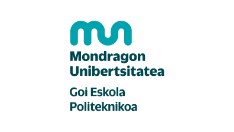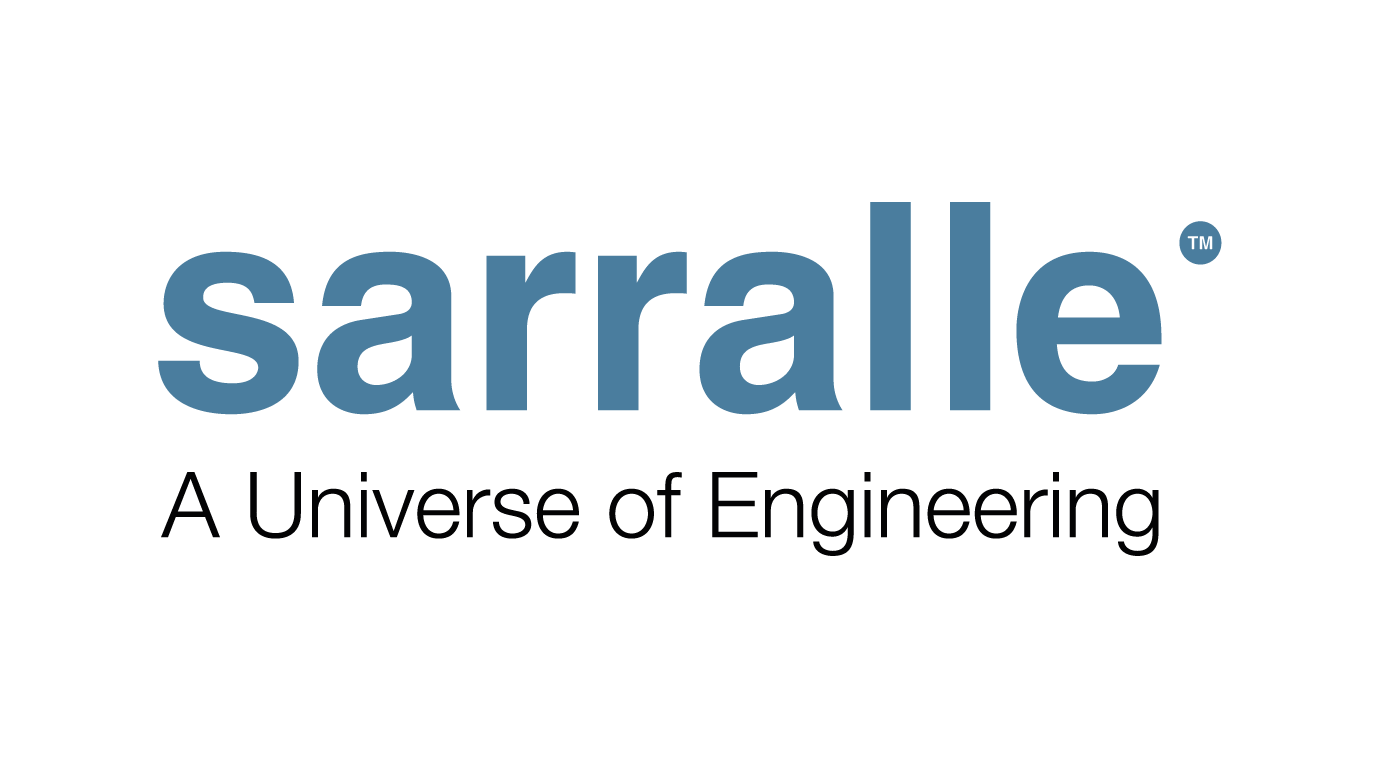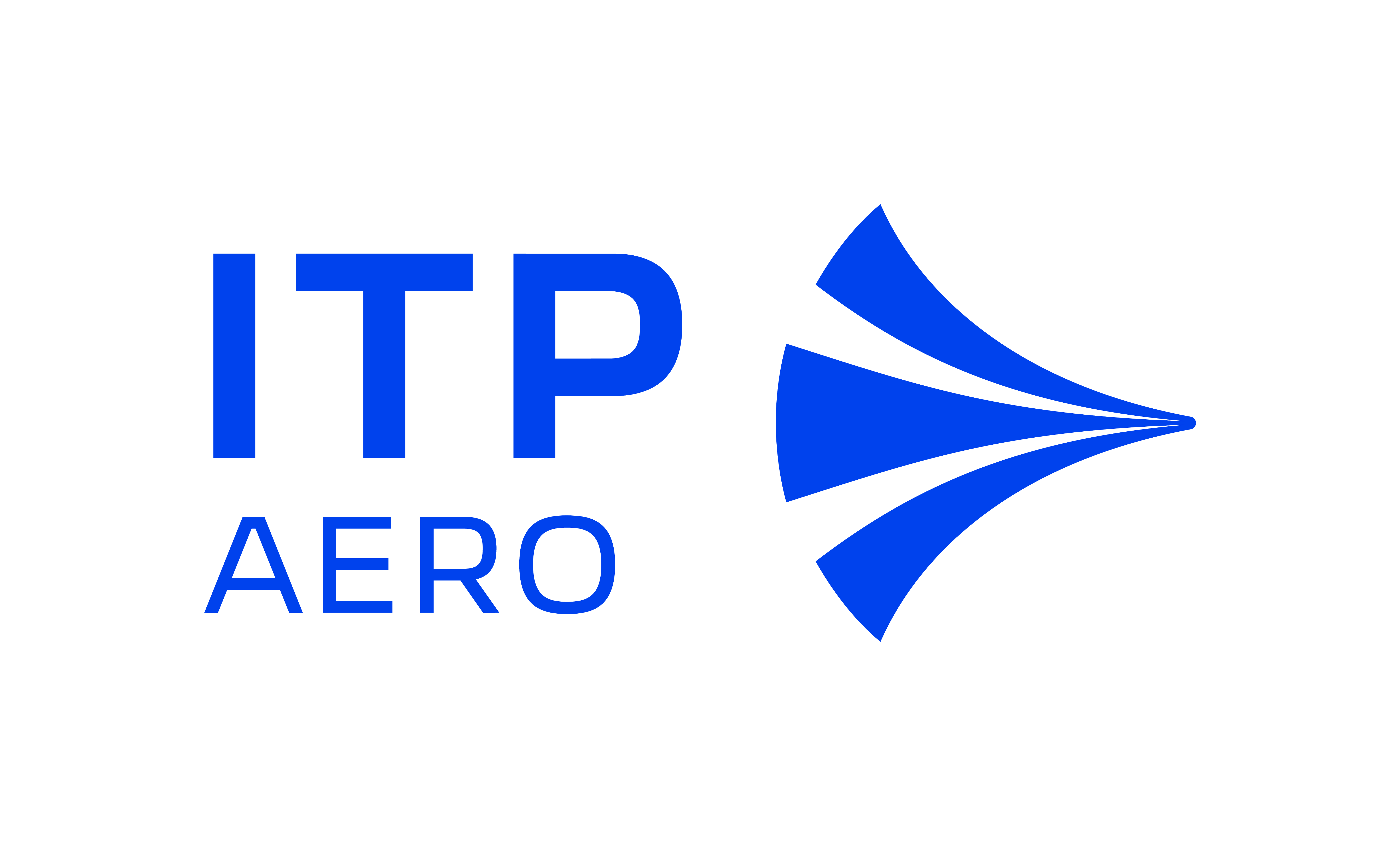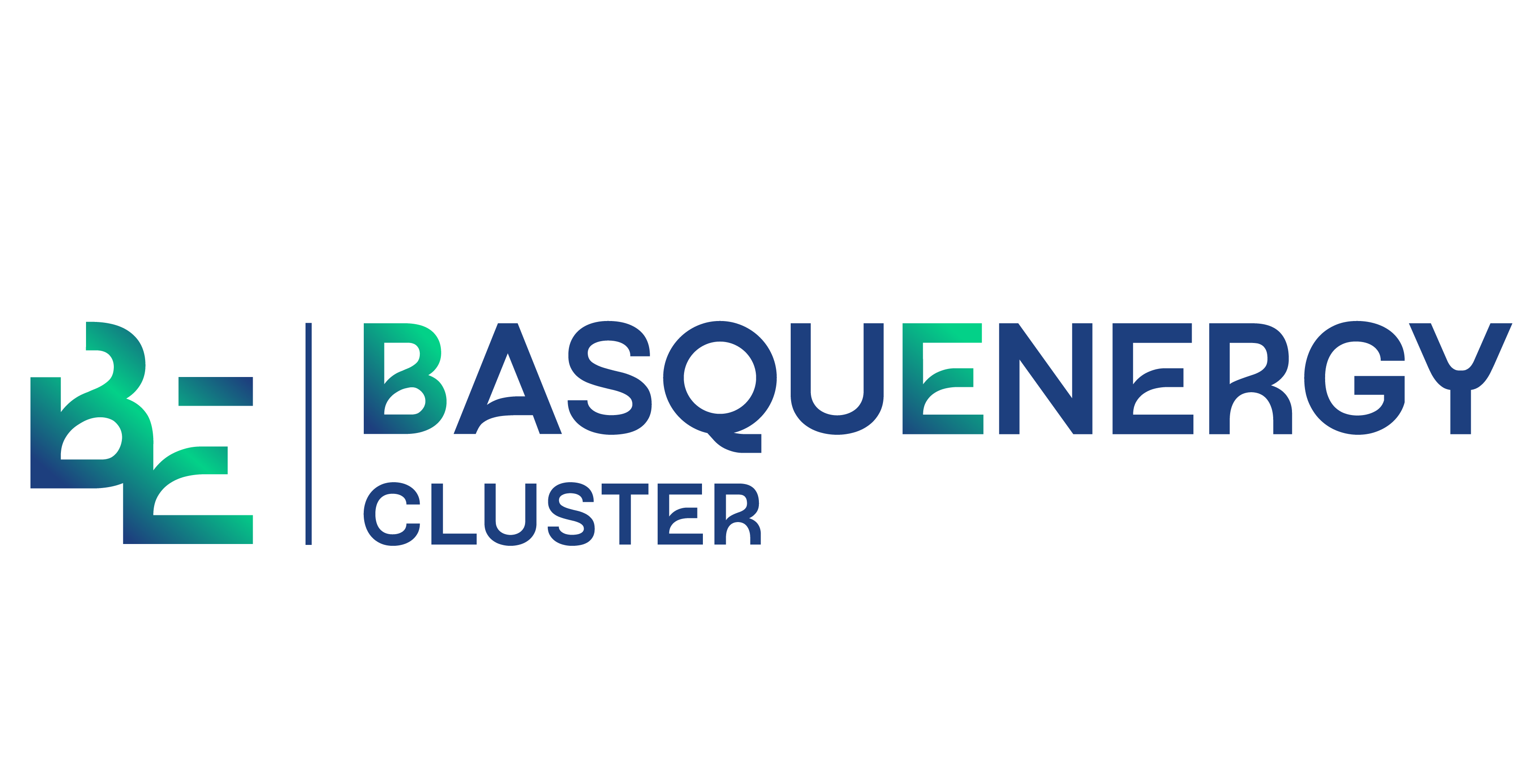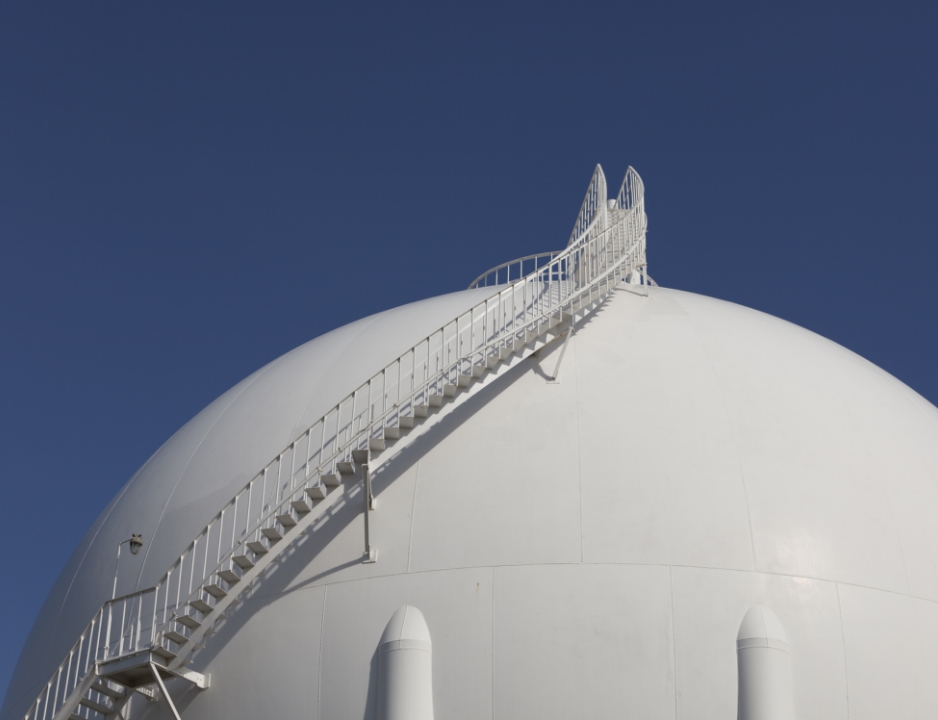
Projects
An initiative that will contribute to technology development and a change in the energy and economic model.
CREATING a hydrogen ecosystem in the Basque Country.
REVIVING the economy of the region.
There are currently 55 projects in the BH2C portfolio, classified into 5 major activity areas, or verticals:
01. Production
Project title
Manufacture and testing of advanced electrodes for wind-powered alkaline electrolysis (ELEKWIND).
More infoProject description
Among existing hydrogen production technologies, the ELEKWIND project focuses on AWE (alkaline water electrolysis) technology. Despite being a more mature technology than others, significant technological challenges need to be addressed in the coming years to make this technology a viable option for hydrogen production from renewable energy sources, bearing in mind that the latter include fluctuating loads and start-up and shutdown cycles, which significantly complicate the operation of these systems compared to the use of other more stable production sources that operate at a constant rate.
ELEKWIND will work on the development of highly efficient electrodes for alkaline electrolysis that perform better than current ones (in terms of current density and durability), and which can be coupled with renewable energy sources, bringing about a new generation of electrodes that will enable the development of alkaline electrolysis in the future. Research will be conducted into different coating techniques: electrodeposition, physical vapour deposition and thermal spraying for the manufacture of electrodes, techniques with high potential for the manufacture of large electrodes. Ex-situ tests will be carried out and, based on these results, the best defined electrode alternatives will be selected and subsequently scaled up to a 2 kW power stack for each of the defined manufacturing methods.
Project leader
Project title
OFFSH2ORE WIND: research into the process of producing green hydrogen offshore on a floating wind platform.
More infoProject description
The conditions for generating renewable energy at sea are very favourable. Offshore turbines produce significantly more energy than their onshore competitors, with 80% of the potential wind resource being in deep water. The OFFSH2ORE WIND project is looking to tap into this potential by coupling the direct production of green hydrogen to offshore wind power, thereby bringing about a significant reduction in hydrogen production costs.
Furthermore, this hybrid model provides other key benefits such as cost savings, opportunities for scaling up and deploying offshore wind farms of higher installed capacity, and a source of additional flexibility that can contribute to solving grid congestion problems. The hybridisation of wind farms and hydrogen production thus results in greater efficiency of the available resource, meeting the main objectives of current energy plans: renewable power and energy efficiency.
The challenge therefore arises for offshore wind producers to incorporate electrolysis processes and sea-to-land hydrogen pipelines as the wind farms move further offshore, which could reduce their energy export costs.
The OFFSH2ORE WIND project will therefore investigate offshore hydrogen production, making full use of offshore wind power and boosting the energy transition of the Spanish economy.
Project leader
Project title
Driver technologies of the hydrogen economy in the Basque Country: green hydrogen production (H2BASQUE).
More infoProject description
The H2BASQUE R&D project was launched to kick-start activity for the development of innovative technologies (and their key components) to produce green hydrogen at a competitive cost.
The project is focused on the development of key components of innovative technologies for green hydrogen production: AEM (Anion Exchange Membrane) electrolysis, PEM (Proton Exchange Membrane) electrolysis, and the production of hydrogen by thermochemical cycles. When completed, the H2BASQUE project will have developed three laboratory-scale prototypes for the production of green hydrogen based on the above-mentioned technologies.
Project leader
Project title
Digital twin for application of quantum computing in hydrogen production plants (GDH2).
More infoProject description
The aim of this project, associated with the industrial research initiative, is to study digital twin and quantum computing technologies for the optimisation of electrolysis applied to the production of green hydrogen.
The specific objectives of the project are:
- the characterisation of a hydrogen production plant and development of its digital twin;
- study and parameterisation of the green hydrogen electrolysis process;
- the application of quantum computing algorithms for optimisation of the hydrogen production process; and
- research on the integration of quantum algorithms in digital twins.
Project leader
Project description
BenortH2 is an initiative which is being taken forward onsite at the Bizkaia Energía combined cycle power plant in the town of Amorebieta, Bizkaia. The end goal is to set up a hydrogen production plant using electrolysers, with storage and compression facilities and delivery to offtakers.
The electrolysers will be powered by renewable energy from the grid through a virtual PPA, whilst the green hydrogen produced will be used as a replacement fuel for natural gas to decarbonise the combined cycle power plant itself, for transport purposes and for consumption in local industry as a replacement for fossil fuels.
The project is being taken forward in three phases:
- Phase 1: 5 MW of electrolysers to be installed, with 3,500 kg of H2 storage for consumption in the combined cycle plant, for industrial consumption and for private fleets of heavy vehicles.
- Phase 2: 15 MW of electrolysers to increase the consumption of the combined cycle power plant, and to service other industrial customers and transport needs in the area.
- Phase 3: 200 MW of electrolysers for a total production of around 16,000 tonnes of renewable hydrogen per year, for other uses and for export.
In these later phases, plans are also in place to collaborate with local industry in adapting consumption and generating new demand. Support will also be provided for the conversion of transport fleets and special vehicles, investing in new hydrogen distribution infrastructure with hydrogen refuelling stations, direct or virtual physical delivery to customers, and connection via a specific pipeline to the Nortegas network for blending with natural gas.
Project leader
Project description
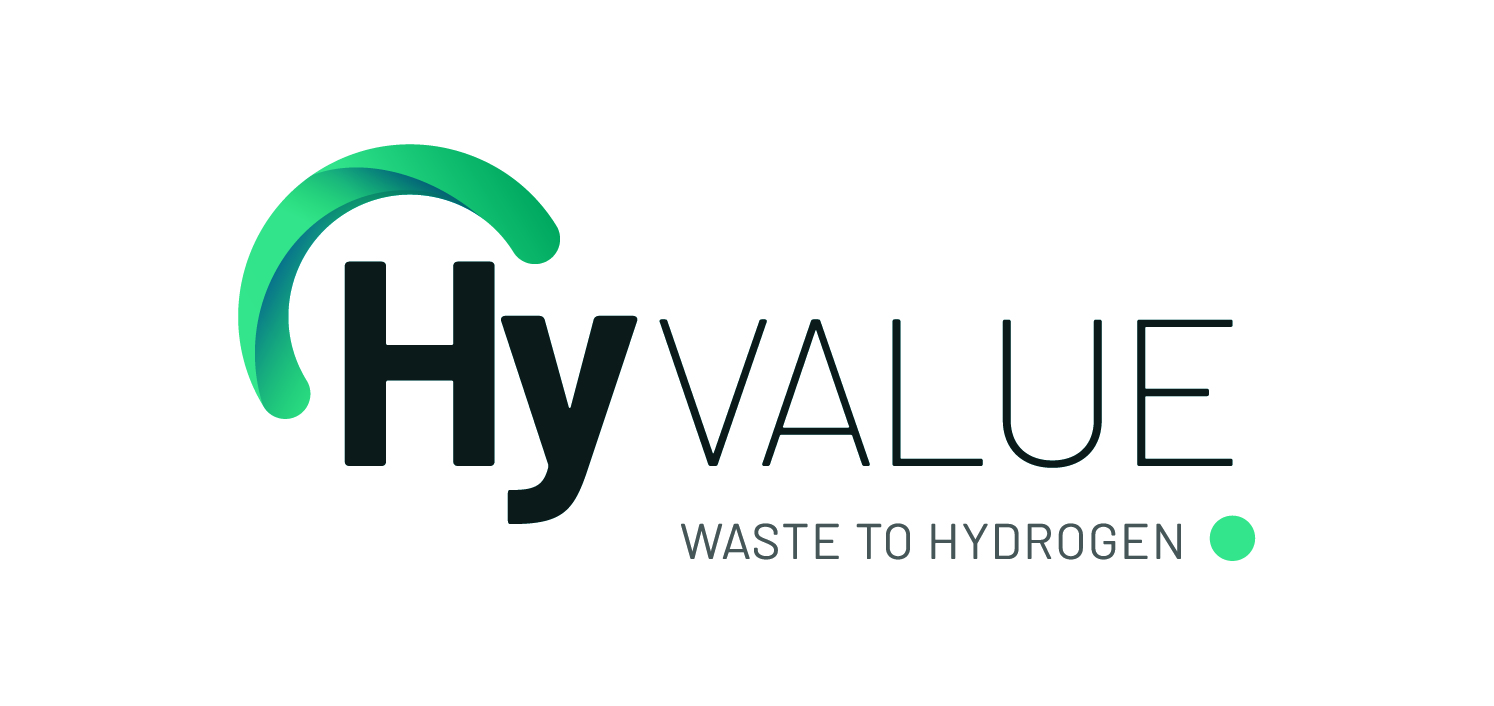
Urban waste in Alava is collected and managed at the Mechanical-Biological Treatment Plant in Vitoria-Gasteiz (Júndiz), where different recycle fractions (paper, plastics, metals, cartons, etc.) are separated and a reject fraction is generated, which is currently dumped in landfill. The objective of the HyValue-Gasteiz project is the material recovery of the non-recyclable fraction of urban waste through the production of renewable hydrogen for use in the industrial, domestic, logistics and mobility sectors. With this circular economy approach:
- a joint and sustainable solution is provided for the environmental and social problems of waste management, reducing the volumes destined for landfill;
- the transition to the hydrogen economy is promoted, with its implications for decarbonisation and its impact as an economic and industrial driver;
- material and energy dependence on external producers is reduced through local hydrogen production using resources (waste) available in the region itself; and
- specialist, stable and sustainable jobs are created in a sector with significant growth prospects.
Project leader
Project description
The project consists of accelerating the industrialisation of high purity hydrogen production and separation systems in situ, and is divided into 4 phases:
1) Industrialisation of the palladium-based membrane production line.
2) Adaptation of the test area for the validation of H2 production and recovery systems.
3) Development and optimisation of the design of a hydrogen production system capable of using natural gas/biogas fuel as feedstock.
4) Design and validation of the system for the separation of blends of hydrogen with other gases to be transported by the distribution network.
The objective of the project is to drive the industrialisation of the membrane production line and of high purity hydrogen production and separation systems in situ, with the end goal of speeding up the commercialisation of H2SITE equipment.
Project leader
Project title
Development and scale-up of a new generation electrolyser with solid oxide technology
More infoProject description
The objective of this project is the analysis and design of a highly efficient and resilient integrated green hydrogen production system, based on solid oxide electrolyser cells (SOEC).
Different stack configurations will be put forward and specific subsystems will be designed to meet Spanish and European targets of decarbonisation and green hydrogen production capacity, considering in their design the challenges of industrialisation, scaling and integration with renewable energy and industrial processes.
Project leader
Project description
Petronor is transforming its industrial complex into multi-energy centres through cutting-edge projects that will reduce its own carbon footprint and potentially that of other industrial players in the region. Its customer-focused portfolio of products and services is tailored to meet all consumer needs and requirements, whether at home or on the move. Petronor is leader in the development of sustainable mobility solutions with increasingly efficient, sustainable and low-carbon advanced fuels.
To achieve net zero emissions by 2050, Petronor is rolling out an integrated model of decarbonisation technologies based on greater efficiency, increased capacity for generating low-emission energy, the production of low-carbon fuels, the development of new solutions for customers, the circular economy and the promotion of innovative projects to reduce the industry's carbon footprint. To this end, Petronor will set up a 2.5 MW electrolyser to produce the first renewable hydrogen in the Basque Country, which is included in Project 3.1 H2 distribution logistics.
The electrolyser will service Petronor's own refinery and various companies and organisations in the vicinity. These include the Energy Intelligence Center and the first hydrogen refuelling station in the Basque Country, which will supply the Technology Park's own mobility logistics platform of light vehicles and buses.
Project leader
Project description
The project consists of the construction of a pilot plant to transform the biogas currently generated in the municipal biowaste treatment plant.
The plant will produce H2 of vehicular characteristics for use in public passenger transport and in municipal solid waste collection trucks. The amount of H2 produced will be sufficient to power 5 interurban buses and 5 waste collection trucks.
The plant will also feature CO2 capture and storage facilities, and a corresponding hydrogen refuelling station for the public buses and waste collection trucks.
Project leader
Project description
Petronor is transforming its industrial complex into multi-energy centres through cutting-edge projects that will reduce its own carbon footprint and potentially that of other industrial players in the region.
To achieve net zero emissions by 2050, Petronor is rolling out an integrated model of decarbonisation technologies based on greater efficiency, increasing low-emission power generation capacity, producing low-carbon fuels, developing new solutions for customers, fomenting the circular economy and driving innovative projects to reduce the industry's carbon footprint.
To this end, Petronor, together with Enagas Renovable and EVE, will build a 10 MW electrolyser in the port of Bilbao. The hydrogen produced with 100% renewable electricity and supplied by our company will supply one of the world's largest plants for synthetic fuels with zero net emissions. To manufacture these sustainable fuels, valid for any segment of the mobility sector, the only feedstock used will be hydrogen and CO2.
Project leader
Project description
The e-fuels project will consist of the design, construction and validation of a demonstration scale plant (8000 l/day; 50bbd) for the production of synthetic fuels, using renewable hydrogen and carbon dioxide (CO2) as feedstock. The project will demonstrate the technical and economic feasibility of the fuel synthesis process using the Fischer-Tropsch route, and will be one of the first plants of this scale worldwide (FOAK) to produce fuels (e-gasoline, e-diesel, e-jet), compatible with existing infrastructure and engines. The project consists of the e-fuels plant itself and an electrolysis plant powered by renewable energy.
This project is one of the first demonstration-scale projects to integrate all the technologies required to produce synthetic fuels, using the Fischer Tropsch route, from renewable hydrogen and captured CO2 as feedstock.
Project leader
Project description
This project provides for the phased implementation of an electrolyser factory, a key element for the generation of renewable hydrogen, to enable a rapid replacement of the current means of hydrogen production in Spain.
The project is to be taken forward in two phases:
1. Phase 1: alkaline electrolyser: new generation of 4.0 manufacturing capabilities for alkaline electrolysers to meet the first wave of industrial projects in Spain.
2. Phase 2: manufacturing and development of state-of-the-art electrolysers.
The aim of this project is to be able to supply the Spanish market with competitive and locally manufactured electrolyser technology, and to meet the growing demand for this type of equipment.
Project leader
Project description
The project paves the way for the deployment of a competitive hydrogen industry, based on European technology, through the design, construction, operation and validation of a 100MW alkaline electrolysis plant operating 24 hours a day in a major industrial environment in the Basque Hydrogen Corridor. The main use will be for consumption at the Bilbao refinery as feedstock, to replace part of the conventional hydrogen currently generated.
385 MW of PV, 190 MW of wind power and a 73 MW battery are planned to be jointly installed to power the project.
The project will not only replace the use of carbon-intensive hydrogen, with its consequent immediate environmental impact, but will also transform the sector by reducing dependence on fossil fuels and contributing to the creation of a new market, triggering a virtuous circle of increased supply and demand. Subsequently, by scaling up production, this will lead to cost reductions which, in turn, will enable the end use of hydrogen in sectors other than industry.
Project leader
02. Transport, Distribution and Storage
Project title
H2BIDEA: the development of technological solutions for the deployment of the new “100% hydrogen distribution networks", to promote green hydrogen valleys and industrial decarbonisation.
More infoProject description
The general objective of the H2BIDEA project is to boost and drive industry in the Basque Country and the hydrogen economy by developing technological solutions for the deployment of new ‘100% hydrogen distribution networks’, in the context of the development of green hydrogen valleys and industrial decarbonisation. H2BIDEA is addressing a significant, global and growing business opportunity for Basque industry ‘now ’. According to the Basque hydrogen strategy of the Basque Energy Agency, investment levels to 2030 in the Basque Country are expected to reach between 910 million and 1.51 billion euros, with 250-350 million euros corresponding to storage, transport and distribution.
The project also contributes to improving the competitiveness of Basque companies in a market where competition is increasing day by day, mainly due to the development of products from Japan, South Korea, Germany and the Netherlands, amongst others. Likewise, H2BIDEA contributes substantially to business sustainability, and the companies participating in the project have a clear strategy focused on diversifying into higher value-added products and services with a renewable approach to achieve sustainability. H2BIDEA also advances the technological capability to supply 100% hydrogen in a safe and cost-effective way to industrial end users that require hydrogen as a vital part of their solution to achieve complete decarbonisation: industrial mining (CALCINOR, H2BIDEA consortium member), the steel industry (the Hazitek H-ACERO consortium, of which TUBOS REUNIDOS and CALCINOR are both members and are partner members in H2BIDEA), amongst others.
Project leader
Project description
The objective of ONTZHi is to research into safer, more compact, cost-effective and sustainable hydrogen storage and transport technologies and solutions.
ONTZHi aims to provide solutions to the following challenges:
Enhancing the resistance of tank and pipeline materials.
Reducing the weight of the storage and transportation system.
Increasing the safety margin of storage and transportation systems.
Reducing the cost and increasing the sustainability of storage and transport.
Researching and generating knowledge on the limits of metallic materials in interaction with hydrogen.
To this end, four lines of work will be pursued, and the following results are expected:
LINE 1: METALLIC TANKS AND COMPONENTS
H2 barrier coatings for metals, reducing the permeability and increasing the fracture toughness of metallic materials in stationary tanks.
LINE 2: MOBILITY TANKS
New recyclable thermoplastic materials.
H2 barrier coatings for composites, reducing H2 permeability.
LINE 3: DISTRIBUTION PIPES.
Embrittlement inhibitors.
H2 barrier coatings for pipes.
LINE 4: CHARACTERISATION AND MODELLING.
Understanding the interaction mechanisms between H2 and metal surface.
New simplified characterisation methods.
Project leader
Project title
Developing solutions for underground storage of hydrogen in salt caverns (H2SALT).
More infoProject description
The technology for underground hydrogen storage is currently undeveloped in both Spain and across Europe, and there are presently no locations for this type of storage. As such, the aim of H2SALT is to research into and develop the necessary technological solutions for the underground storage of hydrogen in salt caverns.
The project will be the result of collaborative work between the different consortium members, namely four specialised companies (Team Ingeniería, Tubacex, Tubos Reunidos and Tamoin) and Iberdrola as an organisation interested in the potential of the project findings. This consortium, together with the contribution of Tecnalia and Tubacex Innovación, the work to be done by the Energy Cluster and SIDEREX (responsible for the communication and dissemination of results) and the know-how of experts at the IGME (Spanish Geological and Mining Institute), will ensure that the H2SALT initiative can call on a multidisciplinary team capable of managing a global project for hydrogen storage in salt cavities.
The main objective of the project is to develop an integral system for hydrogen storage in a salt cavern in line with the prevailing geological conditions, and to determine the technical and economic feasibility of such a system for industrial projects. This includes the structural and behavioural analysis of the gas in the cavern, the tubular products for injection-extraction, the auxiliary facilities required to treat the gas upstream and downstream of the cavern, and the development of a business model.
Project leader
Project description
The European long-term decarbonisation strategy "A Clean Planet for All" refers to hydrogen as a key player in the decarbonisation of hard-to-abate sectors such as cement, chemicals, steel and long-distance heavy transport. Green hydrogen is seen as part of the solution to replace fossil fuels and to speed up the transition to a more sustainable energy model, where the EU is aiming for climate neutrality by 2050. The EU is targeting a production of 10 Mt of green H2 (~300 TWh/year) by 2030, with an expected demand of >2,200 TWh/year by 2050, which will require large-scale production capacities and infrastructure. Large-scale hydrogen production in centralised or semi-centralised production facilities requires distribution solutions to deliver hydrogen to its users. In this respect, for long-distance transport, one of the main options is LOHC technology, the numerous advantages of which include that it enables hydrogen to be stored safely for long periods of time under ambient conditions, H2 can be transported using currently available facilities, and the hydrogen can also be released quickly and efficiently. The aim of UnLOHCked is to develop a CO2 emission-free, efficient and scalable dehydrogenation plant to be used commercially to generate renewable electricity and hydrogen.
Project leader
Project description
EKARRIH2 is an R&D project to develop advanced liquid hydrogen carriers and hydrogenation and dehydrogenation technologies which enable large quantities of hydrogen to be transported over long distances at competitive costs and in an environmentally sustainable way.
EXPECTED RESULTS:
• Development of ionic liquids as advanced liquid hydrogen carriers.
• Development of several different hydrogenation and dehydrogenation technologies.
• Development of key components for said technologies: catalysts, electrodes and membranes.
• Comparison of liquid hydrogen carriers with with other means of hydrogen transport.
Project leader
Project title
Multi-layer hybrid metal structures for use in contact with hydrogen (H2MAT).
More infoProject description
Steels (valves, etc.) in contact with H2-rich media suffer from the problem of hydrogen embrittlement, which causes them to lose mechanical properties leading, eventually, to uncontrolled breakage. The different strategies used to minimise this problem consist essentially of oversizing the components and applying surface coatings that delay the diffusion of H2 into the steel. High entropy alloys (HEA), i.e. Cantor, do not have the problem of hydrogen embrittlement that affects steels. On the contrary, they reveal slightly better mechanical properties in the presence of hydrogen, even at cryogenic temperatures.
The aim of the H2MAT R&D project is to design, manufacture and assess multilayer, high entropy alloy-interphase-steel structures as an alternative to the limitations of steel currently used in hydrogen transport applications.
The specific objectives of the project are:
- to understand and control the physical and chemical nature of the HEA-steel interface to act as a barrier to hydrogen diffusion into steel;
- to assess the behaviour against hydrogen of non-conventional high entropy alloys, as well as their compatibility with steels;
- optimisation of the technologies proposed to produce hybrid joints with controlled interfaces, and in such a way as to minimise diffusion; and
- the technical-economic assessment of the structures obtained compared to using existing steel structures for hydrogen transport.
Project leader
Project description
The aim of the Green2TSO-OPTHYCS project is to develop new sensor technologies which will lead to an increase in the safety level of hydrogen applications, from production to storage and distribution, both in new infrastructure, working with pure hydrogen and in natural gas repurposed installations and pipelines, and thereby contributing to a safe and economically viable implementation of hydrogen production, transport, and storage processes.
The end goal of OPHTYCS is to increase both the safety and cost-effectiveness of operations with both pure hydrogen and hydrogen blended with natural gas, through the development of continuous leak detectors based on optic fibre sensor technologies, both in remote and on-site locations. These newly developed sensors will be adaptable to existing facilities and new infrastructure, and analyse and classify leak types and sources according to risk, location, leak impact, probability of severity and predictability through continuous predictive maintenance. This sensor technology will be tested in several use cases, both with pure hydrogen and blended with natural gas, and the results obtained will be used to align solutions to safety, environmental and cost-effectiveness considerations.
The OPHTYCS project is structured around 3 conceptual areas:
A) Analysis of technology pillars and definition of new sensor technology by defining hydrogen sensor materials, data acquisition systems and interrogation systems and software solution for interpretation of results.
B) Validation of key use cases, demonstrating the capabilities and reliability of the new technologies tested in controlled situations, including gas networks, HRS, CMS and existing wells.
C) Aspects of the technologies derived from the use cases, including assessment of safety and environmental risks and the regulatory framework, and a study of scalability and cost-effectiveness.
Project leader
Project description
The aim of the project is for AMPO to gain a foothold both in the industrial market in which H2 is handled under high pressure and/or high and low temperature conditions, and in the transport and storage area, where complexity of sealing and operation are critical. The project is to be taken forward within the scope of the Basque Hydrogen Corridor (BH2C), of which AMPO is a member.
The project includes the following lines of action:
- industrialisation and design of valves for high pressure hydrogen gas service;
- development of valves for pipeline transport of gas with extremely low emission levels;
- system integration in the hydrogen refuelling filling system;
- development of manual or actuated valves for biomass service (circular economy); and
- design and development of manual or actuated valves for synthetic fuels service (new renewable fuels).
Project leader
Project title
Design and development of compressed H2 transport and supply equipment for heavy vehicles
More infoProject description
The project consists of maximising the efficiency of green H2 transport and logistics processes: : greater transport capacity, autonomy of renewable H2 at consumption points and, consequently, optimising the overall process (adapting production to the demand for renewable H2 for vehicles, minimising energy losses in the production process and all other technical and financial parameters).
The project is divided into four sub-projects:
-H2 semi-trailer for "range extender" tractor units.
-Mobile micro hydrogen refuelling station.
-High-capacity mobile gas pipelines.
-Refrigerated semi-trailer with fuel cell-powered electric refrigeration equipment.
Project leader
Project description
This project consists of increasing the production capacity of the H2 division (compression, mobile and fixed storage, and hydrogen refuelling stations) through growth, digitisation, process optimisation and coordination of the different divisions involved: engineering, manufacturing, type-approvals and maintenance.
Though focused mainly on mobility, the project also extends to other uses of green hydrogen and greater technical and economic efficiency of all Calvera H2 technological solutions through production optimisation and economies of scale (mass production).
To deliver the objectives of the project, growth will be gradual and programmed, respecting the company's systemic order so as to maximise communication, coordination and operation both within and between divisions.
Project leader
Project description
The hydrogen distribution pipeline infrastructure project in Bizkaia is designed to enable an efficient connection of BH2C hydrogen production and end consumption points. The idea is to avoid having to build all the hydrogen distribution infrastructure from scratch, and only to build that which is strictly necessary, either for dedicated use or for access to the current gas network where it is blended with natural gas, enabling hydrogen to be commercialised also through the sale of guarantees of origin and to maximise its competitiveness in the energy mix.
The proposed project is pioneer in Spain in the field of hydrogen distribution infrastructure development, and will establish Bizkaia as a benchmark in decarbonisation both nationally and internationally.
Project leader
Project description

This is a laboratory project to study, in a first phase, the behaviour of hydrogen in natural gas distribution networks in different blending proportions, progressively increasing the percentage of hydrogen from 5% to 20%, and, in a second phase, the behaviour of a network with 100% hydrogen.
In addition to being in itself an innovative platform for the development of hydrogen distribution infrastructure, the project includes a number of features designed to provide evidence and enable conclusions to be drawn on blending natural gas with different proportions of hydrogen, and on the behaviour of specific hydrogen networks for residential, industrial and mobility use.
Project leader
03. Use in Industry
Project description
A project designed to help the steel industry in its efforts to move towards a NetZero future through the intensive use of hydrogen and oxygen in production processes.
Project leader
Project title
H2INTEGRA: the development of technological solutions for the optimal integration of hydrogen logistics with end uses.
More infoProject description
Hydrogen has been identified by both European and international organizations as a crucial component of the energy transition towards a greenhouse gas-neutral economy. Consequently, forecasts point to the development of a European and global hydrogen market, linked to its role in enabling renewable electricity technologies to be integrated into the energy system. This scenario will bring opportunities across the entire hydrogen value chain, including production, integration with renewable generation plants, storage, transport, distribution and consumption. The Basque Country and its industrial fabric must therefore take up a strategic position which enables it to take full advantage of the energy, environmental and industrial and technological development opportunities.
The starting point and base line of the H2INTEGRA project is the infrastructure of Petronor set up to produce hydrogen. Similarly, the main objective of the project is to research into physical and digital solutions to advance in the creation of a hydrogen ecosystem for the optimal connection and management of hydrogen production, distribution and end use.
Project leader
Project description
H2EAT project: innovative technological solutions to reduce the carbon footprint of cast aluminium products for the automotive sector by using renewable hydrogen as an alternative to the fossil fuels currently used in the process, and by promoting the circularity of raw materials.
Project leader
Project title
Advanced solutions for the integration and optimal operation of hydrogen-based devices in end-use applications: mobility and industrial use (ERABILH2).
More infoProject description
The ErabilH2 project was set up to promote technological development in the end-use phase of hydrogen, specifically in mobility and industry, sectors with a significant presence in the Basque Country and where hydrogen is seen as an option for decarbonisation. Delivery of the project goals will enable new knowledge to be generated in these fields, which will ultimately translate into new value proposals for the industrial fabric of the Basque Country. Those proposals will then potentially be applied to move forward in the deployment of hydrogen in the Basque Country.
The objective of the ErabilH2 project, now completed, has been to generate knowledge and develop advanced technological solutions for the integration and optimal operation of hydrogen-based systems, with the end goal of promoting the use of this energy carrier in end-use applications in the mobility and industrial sectors.
Project leader
Project description
This project consists of the design, manufacturing and industrial testing of burners for hydrogen/oxygen mixtures for four ladle melt furnaces, using oxygen as an oxy-fuel in industrial steel and aluminum furnaces and obtaining a smart 4.0 sensor-based control of the process. The aim of the project is to progressively decarbonise the industrial furnaces used in the steel and foundry sectors, though this objective also stretches to include the forging and heat treatment sectors. The end goal is to use only green hydrogen as fuel in these furnaces.
Project leader
Project description
The project consists of technological development for the use of hydrogen as an alternative fuel to natural gas for heating equipment in iron and steel metal manufacturing and rolling mill processes (electric arc furnace, reheating furnace, ladle and tundish heaters, oxycutting), with a view to reducing specific CO2 emissions per tonne of steel produced.
Hydrogen is not currently used in the iron and steel industry, in the steelworks division or in rolling mills. As a result, the initiative will analyse the feasibility of using hydrogen in various plants and the corresponding pilot and industrial projects will be taken forward with a view to making the industry more competitive.
Project leader
04. Use in Mobility
Project title
H2Puritylab - a laboratory to determine the purity of hydrogen and electrolysis.
More infoProject description
The H2Puritylab project is looking to set up and develop a laboratory to determine the purity of hydrogen and to monitor electrolysis. The laboratory has the resources to analyse hydrogen in line with the specifications for the use of hydrogen in mobility with fuel cells, to verify the purity of water at the inlet point of electrolysers, and to validate online hydrogen purity analysers for electrolysers.
Project leader
Project description
The aim of the CRIPICOM project is to develop enabling technologies for the use of hydrogen in aircraft propulsion. The work of the project consortium encompasses developing technology for the conditioning of liquid hydrogen for its transformation into gaseous hydrogen and its regulation for use in gas turbines; developing a first fuel cell powertrain demonstrator incorporating power electronics systems, an electric motor and an element of propulsion (a propeller or a compressor); basic research into hydrogen combustion; and modifying an existing engine to run on a blend of natural gas and hydrogen, paving the way for a transition to running exclusively on hydrogen.
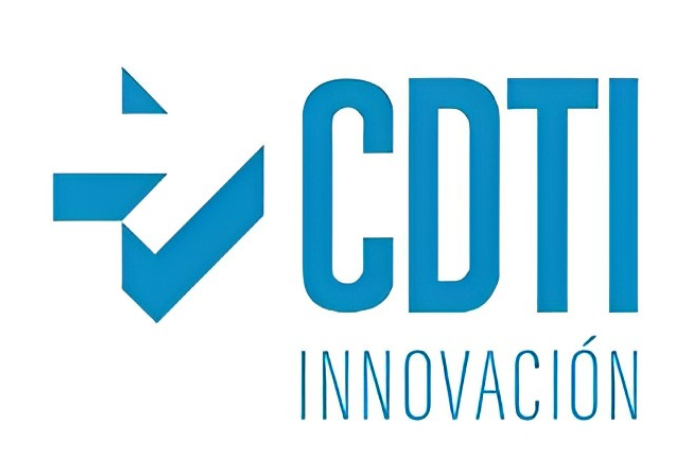

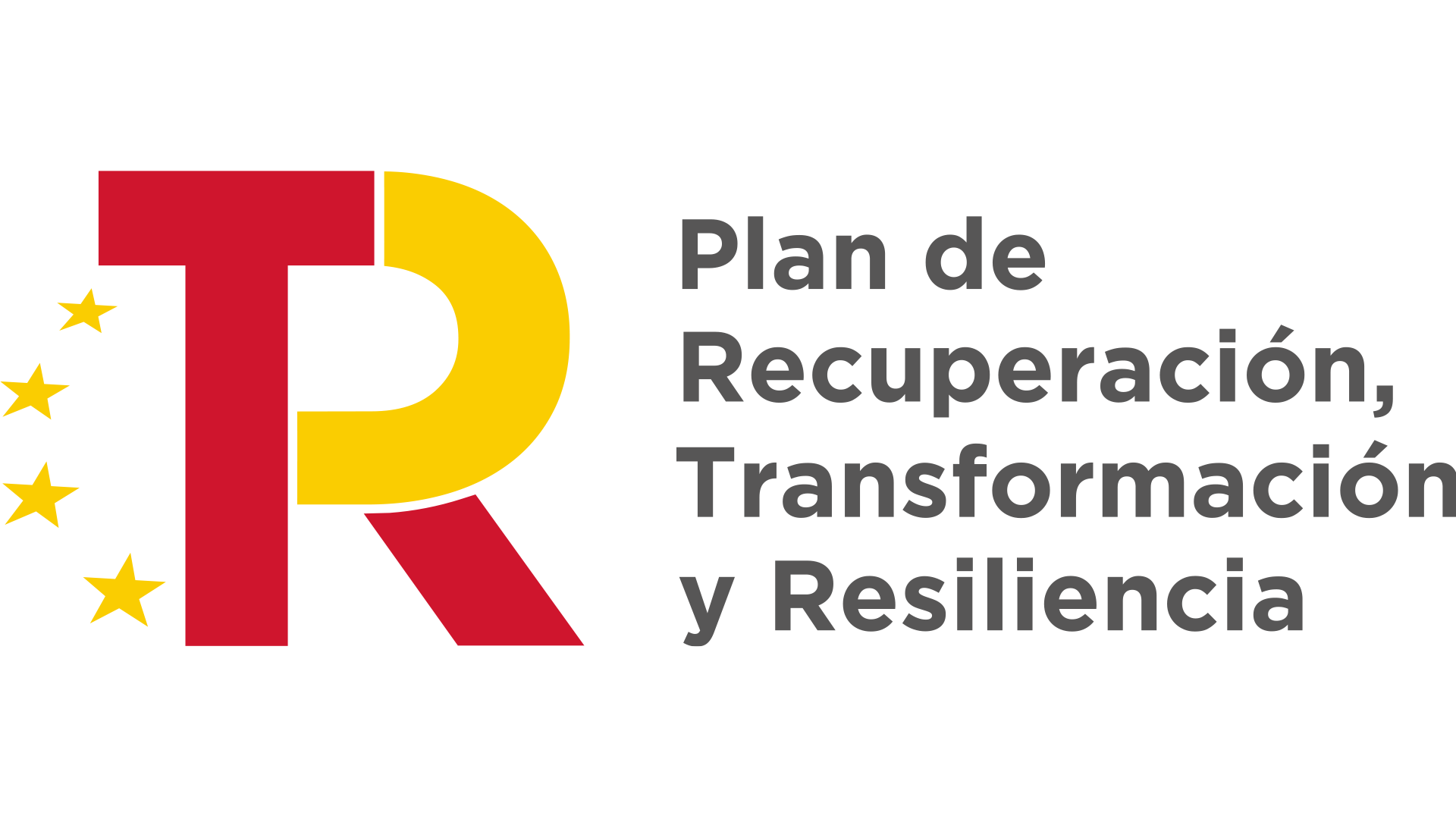

Project leader
Project title
Industrial research on a solution for hydrogen propulsion in light and medium duty electric vehicles with fuel cells (FCEVLDTRUCK)
More infoProject description
The project is part of Technological Challenge 1 of the Sustainable Automotive Technology Program (PTAS, in its Spanish acronym) call: "Development of components and platforms for electric, plug-in hybrid and hydrogen-powered vehicles, section 1.4. "Hydrogen propulsion systems, with development and optimisation of the materials, components and subsystems of the fuel cell and its storage system in the vehicle".
The overall objective of the project is to design and develop a power module based on a 20 kW PEM fuel cell. This power module includes both the stack or fuel cell itself (stack of electrochemical cells, consisting of a bipolar plate, catalysed membrane and gasket) and the auxiliary components and cooling systems.
In addition to the stack, a control unit or FCCU and a current converter specific for the application are being developed for the module: a range extender for a plug-in battery. In addition, a new concept for battery cooling will be developed.
Initially, laboratory tests will be conducted to validate the power module, and final tests and integrated operational analysis will be performed on a 12t prototype electric truck. Data analysis and correlation of digital twin data against real use cases in food logistics distribution will also be conducted.
Project leader
Project title
Investment in light (<3,500kg MPW) hydrogen-powered vehicles for transporting samples for early detection of cervical cancer.
More infoProject description
Replacement of fossil fuel (diesel) powered vehicles with hydrogen powered vehicles to transport the cell samples obtained from pap smears for the early detection of cervical cancer.
Project leader
Project title
Validation and characterisation of the use of synthetic fuel (ptL Power to Liquid) in gas turbines
More infoProject description
The objective of the project, in line with the strategy of other BH2C members, is to validate and characterise the use of synthetic fuel in gas turbines for use in aeronautical applications. The synthetic fuels will be produced using green hydrogen and CO2 sequestered in production processes or power generation as feedstock. Once the synthetic fuel has been obtained in collaboration with BH2C members, ITP Aero will validate its use in gas turbines by performing tests on an existing engine. These tests will characterise and verify the operation of the turbine.
In addition, the tests will be used to measure the turbine's exhaust gases and thus compare the environmental improvements obtained by using synthetic fuels in the propulsion of aeronautical engines. In short, the project will enable progress to be made in the decarbonisation of the aeronautical sector through the use of hydrogen.




Project leader
Project description
The aim of this project is to develop emission-free transport vehicles that meet existing market needs for sustainable and zero-emission transport, and which contribute to decarbonisation targets.
To this end, the CAF Group proposes to develop:
1. Propulsion systems based on hydrogen cells and batteries.
2. Trains that can operate with these systems.
Essentially, the vehicles to be engineered by CAF will be capable of operating with both hydrogen and electricity from the catenary (bi-mode train). This approach is aligned with the European Hydrogen Strategy and with the objective of the Spanish hydrogen roadmap.
Project leader
Project description
This is an R&D project for the technological development of intercity and interurban hydrogen-powered buses, and the subsequent on-the-road commissioning of a fleet of these buses in 2022/23, with a holistic approach to the value chain and 100% in-house technology.
The main objectives of the project are to mitigate climate change through the development of new and clean technologies and sustainable mobility/transportation, economic growth and job creation in the region, and the creation of new businesses.
The project is a partnership between the CAF Group and the MUBIL Foundation, set up at the initiative of the Provincial Council of Gipuzkoa.
Project leader
Project description
The shipping industry is set to make a radical shift over the next three decades towards carbon-free fuels and energy sources to meet the target set in the International Maritime Organisation's Strategy to reduce total greenhouse gas emissions from the sector by at least 50% from 2008 levels by 2050. This transition will require major investments in infrastructure for the production and distribution of new fuels, and a new and modernised fleet.
This project is an example of a step in this direction. It consists of the development of a hybrid hydrogen or synthetic fuel-powered river boat for transporting people or goods, or for leisure purposes, along the Bilbao river.
Project leader
Project description
The aim of this project is to develop, manufacture and validate a dual commuter-regional train, capable of running on both electrified and non-electrified tracks, and providing a zero-emission mode of transport.
To this end, a new train platform will be developed using hydrogen cells capable of generating electricity to power the train on tracks with no overhead power line.
The end result will be a train capable of running indistinctly on routes with electrified and non-electrified sections, thereby meeting the challenge of sustainable mobility and replacing diesel trains which make a significant contribution to the sector's CO2 emission levels.
Project leader
Project description
The main objective of this project is to obtain a range of long-haul Irizar Group vehicles based on fuel cell technology as a strategic element of sustainable mobility, and which:
- have an autonomy of 500 km; and
- can be refueled in a maximum of 10 minutes.
Any expected weight increase should not detract from the attributes of a combustion engine vehicle (number of passengers and luggage capacity).
Irizar has worked on multiple projects related to the development of fuel, hybrid and electric buses and coaches, accumulating extensive experience in the research and development of projects related to sustainable mobility.
Project leader
Project description
The shipping industry has played a significant part in global warming. On average, between 2007 and 2012, a little over one billion tons of CO2 were released into the atmosphere by the maritime sector, amounting to 3.1% of total emissions. In response to this, this project involves the design, manufacture, installation and testing of the first commercial unit of a green H2-powered electricity production system, generated on board by biofuel reforming and for application in both the power supply of ships' auxiliary systems and their propulsion.
This new system is based on high-pressure autothermal reforming of bioalcohols (both bioethanol and biomethanol), with new catalysts and an innovative reactor design and hydrogen separation, including adaptation and compaction of the equipment for marine use.
Project leader
Project description
The project consists of the decarbonisation of two road haulage tractor units for standard bulk 40 t semi-trailers.
Both the type of vehicle itself (heavy transport) and the road on which it runs make it highly suitable not only for the learning objectives of the fleet owners, but also for dissemination and awareness-raising purposes of this new fuel in the community.
The solid bulk produced will be transported from the Petronor plant to the port facilities, where it will be stored prior to being shipped by sea.
Project leader
Project description
The project, promoted by the Provincial Council of Araba, provides for the deployment of a fleet of hydrogen buses. The objectives of the project are to set up a real demonstration and testing environment to enable the development of hydrogen buses, and to take an important step forward in the decarbonisation of transport in the province of Araba.
This specific project addresses the deployment of a fleet of hydrogen-powered buses, with a daily hydrogen consumption of 190 kg.. To this end, 2 hydrogen-powered buses will be used on interurban and long-distance routes currently serviced by the Provincial Council.
Unlike their predecessors, the buses to be commissioned are technologically innovative in that they will be powered by hydrogen fuel cells.
Project leader
Project description
This is a joint (with Lurraldebus) strategic project, within the scope of the MUBIL "Living Lab" initiative, focused on the deployment and commissioning of a fleet of 5 hydrogen-powered coaches to replace the current fleet on certain inter-city and long-distance routes currently serviced by Lurraldebus.
Lurraldebus is the inter-city public transport coach service, run by the Provincial Council of Gipuzkoa, that connects the different towns of the province with each other and with the three capital cities of the Spanish Basque Country. The MUBIL Foundation is the executive arm responsible for deploying the new smart and sustainable mobility and energy storage strategy, and for managing the Reference Centre and Business Hub in Gipuzkoa.
The aim of the project is to take an important step forward in the decarbonisation of medium/long-distance road transport, to enable the technological development of the hydrogen bus to make it possible for companies in the province to access new markets and be competitive in them, and to translate this into new economic activities and job creation in the province.
Project leader
Project description
The project provides for the deployment of a fleet of hydrogen buses operating under the Bizkaibus service management concession, which falls under the responsibility of the Provincial Council of Bizkaia. The objectives of the project are to set up a real demonstration and testing environment to enable the development of hydrogen buses, and to take an important step forward in the decarbonisation of transport in the province of Bizkaia.
This specific project addresses the deployment of a fleet of hydrogen-powered buses, with a daily hydrogen consumption of 190kg.. To this end, 2 hydrogen-powered buses will be used on inter-city routes currently serviced by Bizkaibus.
Unlike their predecessors, the buses to be commissioned are technologically innovative in that they will be powered by hydrogen fuel cells.
Project leader
Project description
The project involves the introduction of hydrogen-powered ramp ground handling equipment, and its commissioning under real operating conditions by the handling companies.
The H2-powered fleet to be deployed can be classified as follows:
- newly acquired equipment
- existing ramp equipment not powered by H2 (diesel and electricity)
The project also includes monitoring of the new equipment in real operating conditions as part of the passenger ground handling activity.
Project description
The project consists of conducting all the necessary preliminary research studies and calculations prior to the construction of a full test bench, including all high-pressure phases in compact form and capable of compressing, storing, cooling and dispensing H2 to light (700 bar) and heavy (350 bar) vehicle tanks.
The aim of the project is to improve efficiency by minimising energy losses, to standardise and to reduce costs to achieve economic stability.
The test bench will be set up in the Abanto Hydrogen Technology Park. In addition to its function as a laboratory for the study of cycle optimisation processes and standardisation of hydrogen refuelling stations, the test bench will also provide customer services.
Project leader
Project description
This project is part of the Repsol national strategy plan, which envisages the construction of 30 hydrogen refuelling stations at its service stations by 2030.
Specifically, as part of the Repsol strategy plan, this project provides for a logistics distribution plant for truck loading in the Petronor industrial centre, 3 hydrogen refuelling stations in Repsol service stations and a fourth hydrogen refuelling station in the Abanto Technology Park, linked to the BH2C Project 7.12. In addition, the project also includes a test bench laboratory for the study of cycle optimisation processes and standardisation of hydrogen refuelling stations.
Project leader
05. Cross-cutting
Project title
KNOWLEDGE NETWORK ON GREEN HYDROGEN: SUSTAINABLE TEACHING INFRASTRUCTURES AND VIRTUAL PLATFORM.
More infoProject description
The objective of this project is to create a knowledge network on green hydrogen technology, with a view to sharing information, providing training, conducting research and kindling public interest.
To do so, use will be made of the innovative TELKI Green Hydrogen Lab at the Santurtzi Vocational Training (VT) Centre, as well as the new facilities to be set up at the Simón de Colonia VT Centre in Burgos, modelled on the TELKI experience.
The TELKI Green Hydrogen Lab, a pioneering facility in the field of vocational training in Spain, was set up at the Santurtzi VT Centre in February 2023. The lab is designed for teaching purposes and makes it possible to manage electricity obtained from two sources: solar PV, with a bifacial solar tracker and a charging canopy for electric vehicles, and wind, generating hydrogen with zero pollutant emissions, which is stored in various metal hydride bottles and enables the cycle to be closed by means of an electrolyser that transforms it back into electricity, which in turn can power other loads. This facility currently supplies power to a 5G telephone station at the Santurtzi VT Centre itself.
In addition, and as a cornerstone for knowledge transfer, an educational platform will be developed with teaching units, practical exercises and all the educational material produced in the project. This will enable the green hydrogen infrastructure of the training centres to be put to good use and the experience to be systematically transferred to the classroom.
Project description
This project consists of the setting up of a "Living Lab"to develop and showcase activities on the possibilities offered by hydrogen for different sectors, such as long-haul goods transport and aviation and heat generation and cogeneration for commercial and/or residential buildings. The test centre will be geared towards activities that contribute to mobility and the decarbonisation of industrial processes.
Project leader
Project description
The strategic objective of this project is to set up an H2 sustainable technology knowledge centre as a benchmark reference in training, research, transfer and outreach activities, and to support the needs arising in the Basque Hydrogen Corridor (BH2C) ) and the demands of business and industry engaged in it.
The knowledge centre has also set itself several other objectives, e.g. in the socio-economic field, to contribute to the generation of a new industrial fabric based on sustainable H2 technologies; with respect to education, to train technicians in hydrogen technologies for vocational training and university courses, for researchers and for business professionals; in the field of research, to act as a driver in the creation, coordination and transfer of technological knowledge in the field of hydrogen and its associated technologies; and with regard to outreach and awareness, to provide information and knowledge of the most relevant aspects in the use of technologies and services associated with the use of hydrogen.
Project leader
Project description
The Hydrogen Sector Forum of the Basque Country was set up on the initiative of the Hydrogen Technology Working Group of the Energy Cluster of the Basque Country. The six forum sessions held in 2020, with the participation of close to one hundred Basque organisations linked to the development of the hydrogen economy, contributed to bringing the sector together and to launching different initiatives in different activity areas such as production, transport, distribution, storage and use.
In the course of 2020, the Hydrogen Technology Working Group, jointly with companies, various players from the field of science and technology and public authorities, played its part in drawing up a Basque strategy for the development of hydrogen technologies. The strategy has defined five key objectives:
1. To select those areas related to hydrogen production, transport and use with the greatest possibilities of synergies with the production and technology system of the Basque Country.
2. To propose the technology lines of greatest interest for the Basque Country to develop over the next 5 years, both in terms of the more preliminary stages of knowledge generation (industrial research) and others focused on experimental development.
3. To identify other cross-cutting actions (e.g. training, promoting entrepreneurship) of interest for optimum positioning of the Basque Country in the hydrogen economy.
4. To propose a series of strategic driver initiatives for the most relevant areas identified during the strategic period.
5. To support the start-up of those strategic R&D projects of greatest interest in the short term.
Project leader
Project title
Study and analysis of hydrogen decarbonisation in the industry, services and residential sectors
More infoProject description
The project consists of drawing up a document of proposed actions for the decarbonisation of the industry, services and residential sectors, as the basis for the creation of a local ecosystem for the production, storage, transport and consumption of hydrogen and its derivatives.
The objectives of the project are:
- to draw up a map of potential hydrogen demand in the Basque Country, with a particular focus on potential hydrogen consumption in industry, and the technical and economic feasibility of its use;
- to assess storage, transport and distribution infrastructure requirements, in relation to the map of potential hydrogen demand; and
- based on the above, to propose actions for an optimal use of hydrogen as a decarbonisation tool.
Project leader










